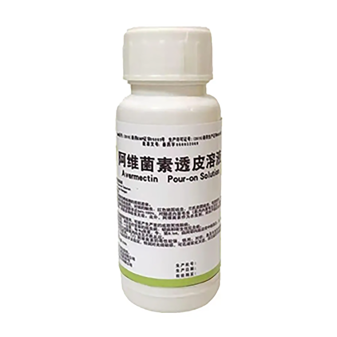- Afrikaans
- Albanian
- Amharic
- Arabic
- Armenian
- Azerbaijani
- Basque
- Belarusian
- Bengali
- Bosnian
- Bulgarian
- Catalan
- Cebuano
- Corsican
- Croatian
- Czech
- Danish
- Dutch
- English
- Esperanto
- Estonian
- Finnish
- French
- Frisian
- Galician
- Georgian
- German
- Greek
- Gujarati
- Haitian Creole
- hausa
- hawaiian
- Hebrew
- Hindi
- Miao
- Hungarian
- Icelandic
- igbo
- Indonesian
- irish
- Italian
- Japanese
- Javanese
- Kannada
- kazakh
- Khmer
- Rwandese
- Korean
- Kurdish
- Kyrgyz
- Lao
- Latin
- Latvian
- Lithuanian
- Luxembourgish
- Macedonian
- Malgashi
- Malay
- Malayalam
- Maltese
- Maori
- Marathi
- Mongolian
- Myanmar
- Nepali
- Norwegian
- Norwegian
- Occitan
- Pashto
- Persian
- Polish
- Portuguese
- Punjabi
- Romanian
- Russian
- Samoan
- Scottish Gaelic
- Serbian
- Sesotho
- Shona
- Sindhi
- Sinhala
- Slovak
- Slovenian
- Somali
- Spanish
- Sundanese
- Swahili
- Swedish
- Tagalog
- Tajik
- Tamil
- Tatar
- Telugu
- Thai
- Turkish
- Turkmen
- Ukrainian
- Urdu
- Uighur
- Uzbek
- Vietnamese
- Welsh
- Bantu
- Yiddish
- Yoruba
- Zulu
ਦਸੰ. . 11, 2024 05:06 Back to list
Radix Isatidis and Its Role in Traditional Medicine and Modern Applications
Radix Isatidis A Traditional Herb with Modern Implications
Radix isatidis, also known as the root of Isatis tinctoria, is a traditional herbal remedy with a rich history in Chinese medicine. This plant, commonly referred to as woad or dyer's woad, has been utilized for centuries for its medicinal properties, particularly in the treatment of various inflammatory conditions, infections, and fevers.
Historical Background
Isatis tinctoria has its roots in ancient Chinese culture, where it was documented in classical texts such as the Shennong Bencao Jing, which dates back to the Han Dynasty (206 BC – 220 AD). The plant's vibrant blue pigment, derived from its leaves, was historically used as a dye, but it was its roots that caught the attention of medical practitioners. In traditional Chinese medicine (TCM), Radix isatidis is categorized under cooling herbs, which are believed to counteract heat and toxicity in the body.
Pharmacological Properties
Modern scientific research has begun to validate many of the traditional uses of Radix isatidis. The root is known to contain bioactive compounds such as alkaloids, flavonoids, and glycosides, which are believed to contribute to its analgesic, anti-inflammatory, and antimicrobial effects. Studies have shown that extracts of Radix isatidis can inhibit the growth of various pathogens, including bacteria and viruses, making it an attractive option in the field of natural medicine.
One of the most well-researched applications of Radix isatidis is in the management of respiratory infections. The herb has been found to alleviate lung inflammation and has been traditionally used to treat conditions like sore throat and the flu. Its ability to modulate the immune response is thought to play a crucial role in its effectiveness against such ailments.
radix isatidis

Modern Applications and Research
In recent years, there has been growing interest in the potential of Radix isatidis as a complementary therapy in modern medicine. Researchers are investigating its role in treating viral infections, particularly in light of the COVID-19 pandemic. Preliminary studies suggest that certain compounds derived from Isatis tinctoria may exhibit antiviral properties, presenting an exciting avenue for innovative treatment strategies.
Furthermore, the herb's safety profile is generally favorable, with few reported side effects when used appropriately. This aspect makes it an appealing choice for integration into contemporary health practices, especially in settings where patients are seeking holistic and natural alternatives to conventional pharmaceutical interventions.
Conclusion
Radix isatidis stands as a testament to the intersection of traditional wisdom and modern scientific exploration. As research continues to unfold, this herb may play a pivotal role in the development of new treatment modalities and complements to standard therapies. Its rich historical usage combined with emerging scientific evidence highlights the importance of revisiting and validating ancient medicinal practices in today’s world.
In summary, Radix isatidis not only embodies the essence of traditional healing but also presents a promising frontier for modern medicine. As we move towards a future that embraces integrative health practices, the significance of such herbal remedies will undoubtedly continue to grow, reminding us of the invaluable contributions of nature to our well-being.
-
Guide to Oxytetracycline Injection
NewsMar.27,2025
-
Guide to Colistin Sulphate
NewsMar.27,2025
-
Gentamicin Sulfate: Uses, Price, And Key Information
NewsMar.27,2025
-
Enrofloxacin Injection: Uses, Price, And Supplier Information
NewsMar.27,2025
-
Dexamethasone Sodium Phosphate Injection: Uses, Price, And Key Information
NewsMar.27,2025
-
Albendazole Tablet: Uses, Dosage, Cost, And Key Information
NewsMar.27,2025













